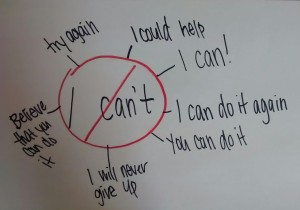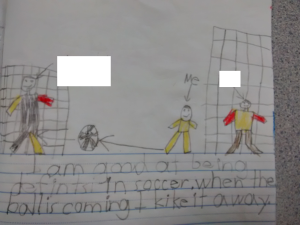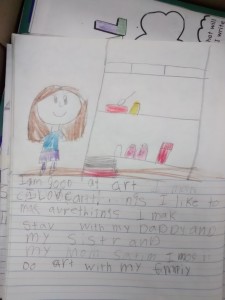Over the past weeks, I have discussed the different strategies of how teachers can build self-confidence and grit among the students. I have also delved into how building a positive classroom environment is essential in fostering these characteristics within students. I believe that now is a good time to take a step further and apply these strategies into students who get frustrated in completing classroom activities. But first, why do students get frustrated in the first place? What are some things that are going on in their minds when they feel defeated? I touched on this piece a little bit a couple months ago when I discussed the fight, flight, or freeze response in frustrated students.
To give a more concrete and practical example of an example of this process, I turn to my practicum school. On Thursday, I led an art activity with my Grade 1 students, where they had to create a fish made out of hearts. As I am quickly learning, art activities can be very loud and there is a lot going on at once – for a teacher candidate, this scenario can often be very intimidating! For the most part, the students did enjoy doing the activity, with some students asking if they could take home their fish that day. Nonetheless, there were some bumps along the way. One significant bump was that a couple students became visibly frustrated when they struggled with making heart shapes for the fish’s tail and head. These students were experiencing the “freeze” response, where they had come to the conclusion that they could not do it and in response, they sat on the floor or at their desks with their heads down. I gave them independent attention and walked through with them the steps on how to draw a heart and brought my own example that I used to demonstrate so that they could see the example closer up. In future, if there are multiple students who are struggling, instead of giving independent attention to each student, I will instead gather the students together and walk through the steps as a group. This would prevent me from jumping from student to student and it would also help to ensure that students who are struggling, get the teacher support that they need in a timely manner.
By going through the process of my inquiry and of being at my practicum school, I am learning that there are many different elements that must come into place in order to help not only build a supportive classroom environment but to also help students build confidence to succeed within the classroom. Perhaps part of the issue is that there are many students and only one to two teachers in a classroom. For students who need extra support, it can be difficult as a teacher, to provide that constant support. This is why my inquiry question is so important to me, as a teacher candidate. I want to build that self-confidence in all of my students so that they do not get frustrated in the first place.
Reference:
Minahan, J., & Schultz, J.J. (2014;2015). Interventions can salve unseen anxiety barriers. Phi Delta Kappan, 96(4), 46-50. Doi: 10.1177/0031721714561446



